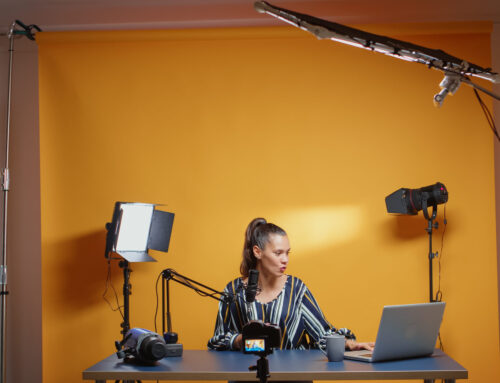Guest Post by Julia Reich of Julia Reich Design
Boosting SEO
The more compelling the information in your infographic, the more people are likely to share it, like it, add it, mention it – so more traffic gets driven to that page, thereby boosting your page rankings. By promoting your piece thoughtfully, you can increase the likelihood of this happening:
- Optimize with keywords. “Bots” can’t read the text in your graphic (typically a jpeg or png file), but any image inserted on a site can be optimized by adding a title, 3-5 sentence introduction, and “alt text” (that’s text you see in lieu of an image on a site if the image loads slowly) into the HTML code. Use the word “Infographic” in the title. The actual file name should be keyword-rich too (rather than some file naming convention you may use internally). Tip: Google *can* read content in a PDF, so consider posting an alternative file your audience can download.
- Incoming traffic. Since they are easily shared via email and social networks, infographics drive people back to your site to see the graphic in context to possibly learn more, or get a better, larger view of it. Make it easy for users to share the piece by adding the following buttons: Twitter, Facebook ‘like’, Google +1, and StumbleUpon.
- Time spent. An informative piece on a topic with wide appeal makes a web page more interesting, so visitors are more apt to spend time on that page – and that’s a good thing, according to Google’s ever-shifting page-ranking algorithm.
Measuring Efficacy is Tricky Business
The nonprofit marketeers and designers I talked with agree that measuring an infographic’s success is difficult. Instead, Ceci Dadisman of the Palm Beach Opera, for example, has a different set of expectations: “We knew we weren’t going to get direct ticket sales from it; it’s more of a mission to further our presence in the community and about opera in general.” She admits, “It’s hard to measure ROI. The evidence is anecedotal. It’s more of a long-term effort to build brand awareness. We can watch the infographic make its way around the Internet with very little effort after the initial posting, so we know people are sharing it and spreading the word.”
At Open Arms, Kelly McManus agrees. “Donations went up last year but we can’t pin it directly to our infographic efforts. We hear a lot of comments – people from other organizations are using the infographics we created to show their own nonprofit how to convey information for donors and volunteers, in a way that hasn’t been done before.”
The Value of Data Visualization
The ubiquity of mobile devices means more and more data streams are flowing all around us, with a need for that information to be processed, delivered, and understood. And with people becoming more design-savvy over time, there’s a demand for visual clarity and accessibility. Infographics are a tool that can use data in an attractive and engaging way to provide value to your organization.
Dadisman appreciates the impact infographics have had on her marketing efforts, and plans to create more in the future. “It is the vernacular right now. Most people are visual learners. The arts are perfect for this form of communication.”
Especially for nonprofits, McManus concurs that “Infographics make it possible to tell a complex story in a few words, that people can grab right away. They’re great for nonprofits to tell a story that will resonate with your audience . Telling people their dimes are being put to good worth – that is the ultimate value.”
Ready to Learn More?
Pinterest Boards
- Beth Kanter’s Pinterest collection of infographics about “nonprofits, social media, and social good”
- Fundraising infographics from the UK
Blog Posts
- Beth Kanter’s wiki on infographics
-
Infographics for Nonprofits: The New Storytelling by Debra Askanase
Tools & Resources
- visual.ly
- visualizing
- tableau
- Google Insights, Google Refine, Google Fusion Tables
- kwiksurveys
- Visualizing Information for Advocacy – a free downloadable manual from tacticaltech.org that offers an introduction to information design. It is intended to provide NGOs with a useful and powerful tool for advocacy and research. Includes a list of free software and open source tools you can download or use online to help with your information graphics.
Thank You to Our Contributors to This Four-Part Series:
Ceci Dadisman, Director of Marketing & PR
Palm Beach Opera
West Palm Beach, FL
Jeff Ferzoco, Creative & Technology Director
Regional Plan Association
New York, NY
Kelly McManus, Creative Director
Susan Pagani, Communications Director
Open Arms of Minnesota
Minneapolis, Minnesota
Patrick Moroney, Senior Designer
Julia Reich Design
Aurora, NY
Kathy Nelson
K. Nelson Research
Ithaca, NY
Julia is Principal of Julia Reich Design, which helps nonprofit organizations bring their mission to life with award-winning brand strategy, graphic design, and web design services. Clients love her team’s top-notch creative work combined with an affordable, personalized approach.


![12 Things You Can Stop Doing Right Now [Infographic]](https://www.nonprofitmarketingguide.com/wp-content/uploads/2025/01/Stop-Doing-2025-Info-hung-up-500x383.png)



